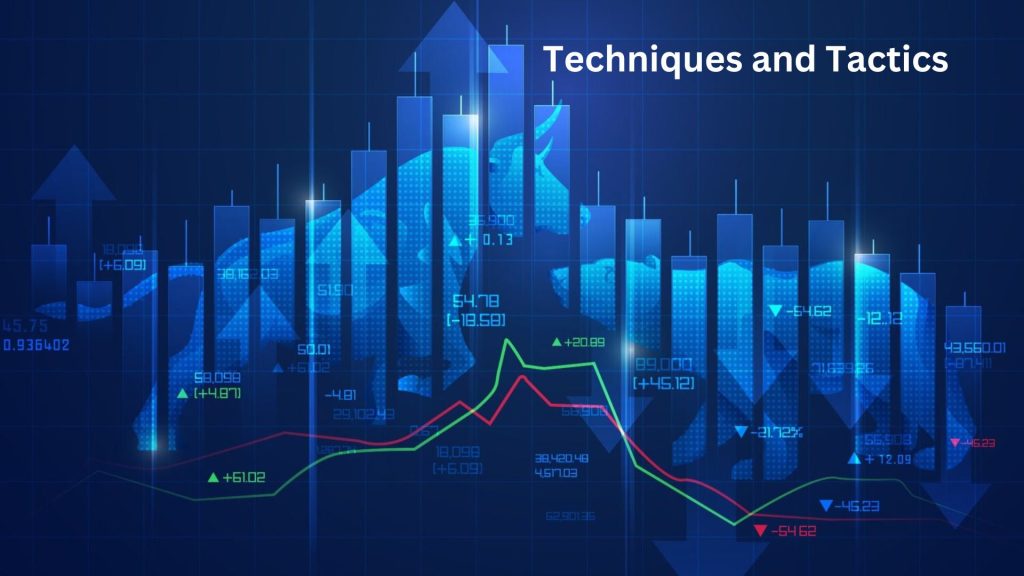Strategies and Tactics for High-Speed Trading. In the fast-paced world of financial markets, high-speed trading has become increasingly popular among investors and traders. High-speed trading, also known as algorithmic trading or automated trading, involves using computer algorithms to execute trades at lightning-fast speeds. This article will delve into the techniques and tactics employed in high-speed trading, providing insights into this dynamic and exciting field.
Introduction
High-speed trading has revolutionized the way financial markets operate. It relies on advanced technology and complex algorithms to execute trades quickly, precisely, and efficiently. This article explores the techniques and tactics used in high-speed trading, shedding light on its benefits, risks, and the strategies traders employ to gain an edge in the market.
Understanding High-Speed Trading
High-speed trading involves using computer algorithms to execute trades in fractions of a second. These algorithms are designed to analyze market data, identify trading opportunities, and execute trades with minimal human intervention. The speed and efficiency of high-speed trading enable market participants to capitalize on minor price discrepancies and fleeting market conditions.
Benefits of High-Speed Trading
- Liquidity Provision: High-speed traders play a vital role in providing liquidity to the markets, ensuring there are buyers and sellers for various financial instruments.
- Faster Execution: By leveraging automation and low-latency infrastructure, high-speed traders can execute trades at lightning-fast speeds, reducing the risk of slippage.
- Improved Efficiency: High-speed trading eliminates manual processes and human emotions from trading decisions, leading to more efficient and objective trading outcomes.
- Access to Multiple Markets: High-speed trading systems can simultaneously access multiple markets and exchanges, enabling traders to capitalize on cross-market opportunities.
Risks and Challenges
- Market Volatility: High-speed trading amplifies the impact of market volatility, as algorithms react swiftly to changing market condition leading to increased risk.
- Tech concernsThe reliance on technology exposes high-speed concernst concernsraders to the risk of technical glitches or system failures, which can result in substantial financial losses.
- Regulatory Scrutiny: High-speed trading has faced regulatory scrutiny due to market manipulation, fairness, and systemic risk concerned.
Market Data Analysis
In high-speed trading, accurate and timely market data analysis is crucial. Traders employ sophisticated algorithms to process vast amounts of data, including price feeds, order books, news releases, and social media sentiment. In addition, By analyzing this data, traders can identify patterns, trends, and trading opportunities that may arise in the market.
Algorithmic Strategies
High-speed traders utilize a variety of algorithmic strategies to execute trades. Some common methods include:
- Market Making: Traders provide liquidity to the market by placing bid and ask orders, profiting from the spread between buy and sell prices.
- Statistical Arbitrage: Traders identify statistical anomalies or pricing discrepancies in related instruments and execute trades to profit from these inefficiencies.
- Momentum Trading: Traders exploit short-term price momentum by entering positions in the direction of a prevailing trend, aiming to capture quick profits.
- News-Based Trading: Traders react to news releases or events by analyzing market sentiment and executing trades based on the impact of the news on prices.
Co-Location and Low-Latency Infrastructure
To minimize latency and execute trades with lightning-fast speed, high-speed traders often co-locate their trading servers near exchanges. In addition, Co-location reduces the physical distance between trading systems and exchange servers, minimizing the time required for data transmission and order execution.
Risk Management
In addition, Effective risk management is essential in high-speed trading. Traders employ risk mitigation techniques such as pre-trade risk checks, position limits, and stop-loss orders to manage potential risks. Additionally, robust risk monitoring systems are implemented to identify and address any anomalies or breaches in trading strategies.
Regulatory Considerations
In addition, Regulatory bodies closely monitor high-speed trading activities to ensure market integrity and investor protection. Various regulations govern high-speed trading, including requirements for risk controls, order cancellation policies, and market surveillance. Traders must comply with these regulations to operate within the legal framework.
Future Trends in High-Speed Trading
In addition, The field of high- will trading continues to evolve rapidly. Some future trends include:
- Artificial Intelligence: Advanced AI algorithms will play a more significant role in high-speed trading, enabling machines to learn and adapt to changing market conditions.
- Machine Learning: Traders will leverage machine learning techniques to enhance their trading strategies, improving decision-making processes and performance.
- Quantum Computing: Quantum computing technology has the potential to revolutionize high-speed trading by exponentially increasing computational power and processing capabilities.
Conclusion
In addition, Higadditionaltrading has transformed the financial landscape, bringing speed, efficiency, and liquidity to the markets. This article explored the techniques and tactics employed in high-speed trading, highlighting its benefits, risks, and the strategietlentina n regainitive advantage. As technology advances andnevolveolve, high-speed trading is likely to continue shaping the future of finance .


